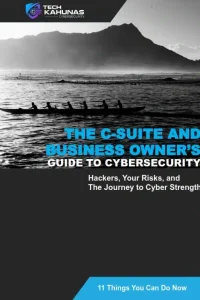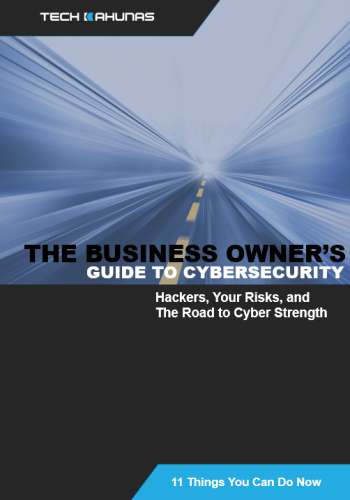You're especially susceptible to highly-targeted cyber threats due to your UHNW status, marked by extensive digital exposure and luxury asset vulnerability. To protect yourself, identify security gaps through continuous audits and maintain strong access controls. Implement a multi-layered security strategy using cutting-edge encryption and quantum technologies. Proactively manage your online presence and keep sensitive data encrypted both at rest and in transit. Developing a robust family cybersecurity plan and periodic training will bolster your defense against social engineering and insider threats. Explore advanced tactics and emerging technologies to construct an impenetrable digital fortress around your assets.
Key Takeaways
- Implement robust multi-layered defense strategies to create redundant barriers against potential cyber threats.
- Utilize cutting-edge encryption techniques, including quantum encryption, to protect sensitive data from unauthorized access.
- Conduct detailed security audits to identify and address vulnerabilities in existing cybersecurity systems.
- Provide continuous cybersecurity training and awareness programs for family members and staff.
- Develop a comprehensive family cybersecurity plan with strict privacy policies and incident response strategies.
Understanding UHNW Cyber Risks
Understanding the unique cyber risks faced by Ultra-High-Net-Worth (UHNW) families requires a detailed analysis of their digital footprint and asset exposure. You must first recognize that cyber risk psychology plays a significant role in safeguarding your assets.
UHNW families often live a tech savvy lifestyle, amplifying their digital footprint and making them prime targets for cyber threats. Awareness of this footprint is vital to counteract social engineering tactics aimed at exploiting personal and financial information.
Luxury asset protection extends beyond physical security; it demands stringent online reputation management and identity theft prevention strategies. It's important to understand how online activities can impact both you and your family's public image, and so necessitating proactive measures to preserve privacy and reputation.
Compliance with privacy laws isn't just a legal obligation but a protective shield against potential breaches.
Family trust dynamics can also influence cybersecurity strategies. Involve all members in digital legacy planning to guarantee that sensitive information remains secure across generations.
This approach not only protects assets but also fortifies the family's long-term digital security posture. By understanding these facets, you can build a robust defense against the intricate cyber risks UHNW families face.
Assessing Vulnerabilities
To effectively assess vulnerabilities in your cybersecurity framework, start by identifying security gaps in existing systems and protocols.
Next, evaluate your digital exposure by examining the breadth and depth of online presence and data accessibility.
Identifying Security Gaps
When it comes to safeguarding the digital assets of ultra-high-net-worth (UHNW) families, identifying security gaps plays a crucial role in fortifying their cybersecurity posture. By conducting thorough security audits and risk assessments, you can pinpoint vulnerabilities that could be exploited by malicious actors.
Effective threat modeling helps anticipate potential attacks, while compliance standards guarantee that your systems meet established security criteria.
To identify these gaps, consider the following steps:
- Perform Detailed Security Audits: Regularly evaluate your systems to identify weaknesses in access controls and data classification. This guarantees that sensitive information is adequately protected and only accessible to authorized individuals.
- Implement Robust Incident Response Plans: Develop and regularly test incident response strategies to quickly address security breaches. This involves digital forensics to understand the breach's nature and implement corrective measures.
- Align with Privacy Regulations and Security Policies: Confirm that your security measures align with current privacy regulations and internal security policies. This alignment helps maintain a strong defense against unauthorized data access and potential legal ramifications.
Evaluating Digital Exposure
Evaluating digital exposure is a vital step in evaluating vulnerabilities within UHNW families' cybersecurity frameworks. You need to understand how digital footprints form and the potential risks they pose.
Begin by analyzing online privacy settings, ensuring they align with best practices in cyber hygiene. Evaluate what personal information is shared and with whom, both intentionally and inadvertently. Data sharing can lead to unintended public exposure, so scrutinize all platforms where information is exchanged.
Social media is a prominent channel for digital exposure. Assess the family's presence on these platforms, considering the implications for both current and future privacy. Public exposure can escalate quickly with inadequate privacy controls, affecting the family's reputation.
Incorporate robust reputation management strategies to monitor and mitigate risks.
Additionally, consider digital legacy, which includes the long-term impact of digital footprints on privacy and reputation. It's essential to evaluate how data persists over time and the measures needed to manage this legacy effectively.
Analyzing Threat Sources
Having examined digital exposure, a thorough assessment of threat sources is the next logical step in fortifying UHNW families' cybersecurity frameworks. You must identify potential vulnerabilities within your systems.
Social engineering and insider threats often exploit personal relationships, creating pathways for malicious actors. Understanding the subtleties of phishing tactics is essential; these methods evolve alongside malware evolution, increasing the risk of data breaches and identity theft.
Consider the following vital vulnerabilities:
- Device Security: Inadequate device security can turn your smartphones, tablets, and laptops into gateways for cybercriminals, compromising sensitive information and digital privacy.
- Ransomware Trends: Ransomware has become increasingly sophisticated, targeting not just individual devices but entire networks, demanding hefty ransoms for data decryption.
- Cyber Insurance: While cyber insurance can mitigate financial losses from breaches, it shouldn't replace robust cybersecurity measures. Relying solely on insurance can leave vulnerabilities exposed.
Implementing Advanced Security Solutions
To enhance cybersecurity for UHNW families, you should prioritize implementing cutting-edge encryption techniques that protect sensitive data from unauthorized access.
Employing multi-layered defense strategies will further bolster security by creating redundant barriers against potential threats.
Cutting-Edge Encryption Techniques
In the domain of cybersecurity, especially for ultra-high-net-worth (UHNW) families, implementing cutting-edge encryption techniques is paramount to safeguarding sensitive information.
Quantum encryption offers a revolutionary approach, utilizing the principles of quantum mechanics to guarantee data is impervious to interception. Homomorphic encryption allows computations on encrypted data without decryption, maintaining confidentiality throughout processing. Blockchain security, with its decentralized nature, provides a robust framework for verifying transactions and securing assets.
Consider the following to enhance your security framework:
- Zero Knowledge Proofs: These allow you to prove knowledge of a fact without revealing the fact itself, enhancing privacy.
- Secure Multiparty Computation: This enables parties to jointly compute a function over their inputs while keeping those inputs private.
- Post Quantum Cryptography: Prepare for future threats with encryption algorithms that resist quantum computer attacks.
Data masking and end-to-end encryption are essential for maintaining data integrity and confidentiality.
Privacy-preserving techniques guarantee that sensitive details remain undisclosed, even during data analysis.
Multi-Layered Defense Strategies
Building a robust cybersecurity framework for UHNW families demands a multi-layered defense strategy, integrating advanced security solutions across all digital touchpoints. Start with a solid security architecture that incorporates threat modeling and risk assessment to identify potential vulnerabilities. Implement access controls to restrict permissions to sensitive data and guarantee network segmentation to isolate critical systems, minimizing the impact of potential breaches.
Develop incident response plans that include regular drills to prepare for real-world scenarios. These plans should align with stringent compliance measures, confirming every aspect of your digital fortress adheres to current regulations. Enhance security awareness through continuous training programs, empowering family members and staff to recognize and respond to potential threats.
Backup strategies are essential for data protection, guaranteeing that crucial information can be recovered swiftly in the event of a breach. Here's a concise table to illustrate key components and their purposes:
| Component | Purpose |
|---|---|
| Security Architecture | Foundation of your cyber defense |
| Threat Modeling | Identifies potential vulnerabilities |
| Access Controls | Restricts data access to authorized users |
| Network Segmentation | Isolates critical systems |
| Backup Strategies | Guarantees data recovery and continuity |
Protecting Personal and Financial Data
Safeguarding personal and financial data for ultra-high-net-worth (UHNW) families demands a robust and multi-layered cybersecurity strategy. You must prioritize data privacy to prevent identity theft, guaranteeing all personal and financial information is stored securely.
Implement secure storage solutions that encrypt sensitive data both at rest and in transit. Practice digital hygiene by regularly updating software and using strong, unique passwords for all accounts.
Focus on risk management by identifying potential threats and vulnerabilities. Regularly review privacy policies to understand how your data is used and shared. Personal firewalls are essential to protect against unauthorized access, while encrypted communication ensures that messages remain confidential.
Safe browsing habits, such as avoiding suspicious links and websites, further reduce the risk of data breaches.
If a security incident occurs, a swift incident response is critical to minimize damage.
Here are three alarming consequences of inadequate protection:
- Identity theft can devastate personal and financial reputation.
- Data breaches can lead to significant financial loss and legal implications.
- Compromised information can result in emotional distress for you and your family.
Developing a Family Cybersecurity Plan
Crafting a thorough family cybersecurity plan is essential to fortify your family's digital assets against potential threats. Start by enhancing risk awareness through regular family communication sessions. These discussions should focus on identifying potential threats and understanding individual roles, promoting personal accountability in maintaining cybersecurity measures.
Effective data management lies at the core of your plan. Implement strict privacy policies and guarantee everyone understands the importance of safeguarding sensitive information. Establish clear protocols for data storage, sharing, and disposal, integrating technology solutions to automate these processes where possible.
Technology integration isn't just about the tools you use; it's about creating a cohesive system where each device and application speaks the same security language. Ascertain that all family members use secure passwords, enable multi-factor authentication, and regularly update software to patch vulnerabilities.
Prepare for potential breaches by developing an incident response strategy. Assign roles for each family member, detailing specific actions to take when a security incident occurs. Conduct regular drills to evaluate the effectiveness of your response plan.
Building a cybersecurity culture within your family involves ongoing education and vigilance. By fostering a proactive approach, you can create a resilient digital fortress that safeguards your family's assets.
Leveraging Emerging Technologies
As you solidify your family's cybersecurity framework, it's important to tap into the potential of emerging technologies to enhance your defenses. Quantum computing promises unparalleled computational power, potentially revolutionizing encryption methods.
Blockchain security offers immutable transaction records, guaranteeing data integrity across decentralized networks. By integrating artificial intelligence and machine learning, you can employ predictive analytics and anomaly detection to proactively identify threats.
Consider the following critical components to fortify your security:
- Biometric Authentication: Implementing fingerprint or facial recognition adds a personalized security layer, making unauthorized access less likely. It's a robust method to verify identities.
- Zero Trust Architecture: Adopt a zero trust model where every user and device, inside or outside your network, is verified before granting access. This minimizes potential entry points for attackers.
- Internet of Things (IoT) Security: Secure all connected devices in your home. IoT devices can be vulnerable entry points, so verify they're protected and monitored.
Leveraging these technologies builds a resilient digital fortress for your family. Stay ahead by continuously updating your strategies and adapting to new technological advancements, guaranteeing long-term cybersecurity for your ultra-high-net-worth family.
Educating and Training Family Members
Educating and training family members is vital for maintaining robust cybersecurity. Start by organizing family workshops that focus on technology literacy and online safety. These sessions should teach digital etiquette to guarantee everyone understands the implications of their online actions.
Implement cybersecurity drills to simulate potential threats and test incident response capabilities. This hands-on approach helps family members recognize and react to breaches swiftly and effectively.
Awareness campaigns play an important role in keeping everyone informed about the evolving cyber threat landscape. Regular updates on new risks and best practices will empower your family to make informed decisions.
Privacy education should be a priority, teaching the importance of protecting personal information and understanding data sharing consequences.
Define clear security roles within the family to promote accountability. Assign tasks such as monitoring devices, updating software, and managing passwords.
Risk communication must be open and continuous; discuss potential vulnerabilities and mitigation strategies. By fostering a culture of proactive cybersecurity, you'll reduce risks considerably.
Ultimately, a well-informed family is your first line of defense. Prioritize ongoing education and training to build a digital fortress that safeguards both personal and financial assets.
Frequently Asked Questions
How Can UHNW Families Ensure Cybersecurity for Their Smart Home Devices?
To guarantee smart device security, you should employ robust network isolation. Segment your networks to separate smart devices from sensitive data. Implement strong encryption protocols and regularly update device firmware to shield against vulnerabilities and unauthorized access.
What Role Does Physical Security Play in Overall Cybersecurity for UHNW Families?
Imagine a fortress without a moat. Physical security bolsters cybersecurity by preventing unauthorized entry. You should integrate strict access control and robust security protocols to create a seamless defense, ensuring both physical and digital domains remain secure.
How Do UHNW Families Handle Cybersecurity When Traveling Internationally?
When traveling internationally, you must focus on secure travel by implementing strong data protection measures. Use encrypted devices, secure networks, and VPNs. Regularly update software and conduct risk assessments to protect your sensitive information from potential threats.
What Steps Should UHNW Families Take if a Cyber Breach Occurs?
When a cyber breach occurs, you'll activate your incident response plan immediately. Notify stakeholders quickly, ensuring breach notification protocols are followed. Analyze the breach's scope, contain affected systems, and work with experts to prevent future vulnerabilities.
How Can UHNW Families Maintain Privacy on Social Media Platforms?
Imagine your digital footprint is a shadow; it follows you everywhere online. To maintain privacy on social media, limit shared personal information, use strong passwords, adjust privacy settings, and regularly audit accounts for unauthorized access or changes.
Conclusion
In your journey to build digital fortresses for UHNW families, think of cybersecurity as a well-oiled machine, continuously adapting to new threats. By evaluating vulnerabilities, implementing cutting-edge solutions, and crafting an all-encompassing family plan, you're not just protecting assets, but fortifying your family's digital legacy. Leverage emerging technologies and guarantee everyone is educated and trained. With vigilance and precision, you'll create an unbreakable defense against cyber adversaries, securing peace of mind for generations to come.



 Get your CPA firm aquainted with new FTC rules.
Get your CPA firm aquainted with new FTC rules. 




